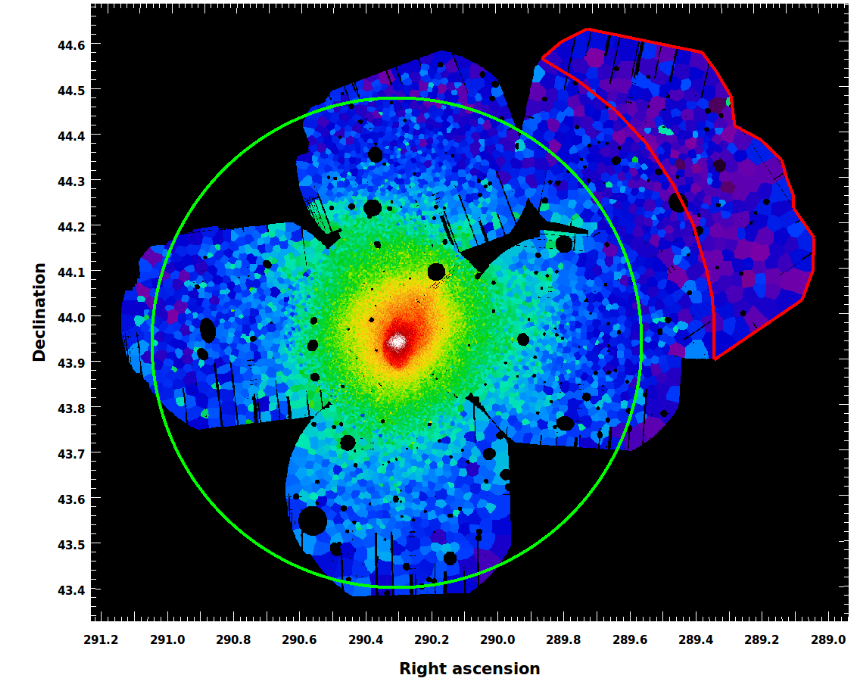 X-ray observations performed by the XMM-Newton satellite of the galaxy cluster A2319.
X-ray observations performed by the XMM-Newton satellite of the galaxy cluster A2319.
Credit: Ghirardini et al. 2017
Galaxy clusters are the largest structures in the universe. They number from a hundred to a couple of thousands of galaxy members that are bound together through gravity. Their mass reaches up to the 1014-1015 solar masses and their diameter is typically 1023 meters. They grow hierarchically, that is by the merger of smaller galaxy groups.
The XMM-Newton Cluster Outskirts Project (X-COP) uses X-ray observations, from the XMM-Newton satellite and data from the Planck Sunyaev-Zeldovich (SZ) survey. Its goal is to combine high-quality X-ray and SZ constraints to access the physical information on the thermodynamical properties of the hot plasma across the virial radius. Towards this end, astronomers will study the entire volume of 13 massive clusters in the local universe. They will measure the distribution of entropy and thermal energy to an unprecedented level of precision and study the mass distribution of infalling gas clumps, among others. They preliminary results on the galaxy cluster Abell 2142 were very promising, measuring the properties of the gas at large radii and demonstrating the effectiveness of the method.
In the near future, X-COP will allow us to determine the universal profiles of the thermodynamic quantities and the gas fraction of galaxy clusters.
Publication: Eckert, Ettori, et al. 2017
